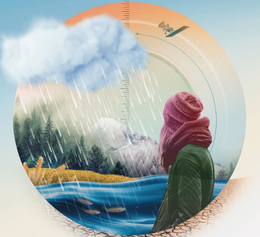 As I interviewed water experts and crafted this story for UC Berkeley's Breakthroughs magazine, outside my window unprecedented storms were dumping rivers of rain into my courtyard. It was a visceral, and humbling, reminder that talking about water and climate change is no longer just academic -- it's the weather report. But the implications of a changed water cycle run deep, and the connections, complexities, and data these scientists point to can inform good decision-making, even as the world changes. This winter’s explosive rainfall events brought weeks of torrential atmospheric river storms to California, yet many of the state’s reservoirs remained below annual averages. “We are in a flood emergency while we still have an active drought emergency,” Karla Nemeth, director of California’s Department of Water Resources, told the Washington Post in January. “That pretty much says it all about the new normal we have with climate change.” That new normal is a more intense water cycle, with wetter wet periods and longer, drier droughts....“Climate change is not just simple warming,” says [professor] Dennis Baldocchi. “It’s the timing of the rains. It’s the amount of warming when it’s warm.” Those changes in variation affect how water comes, goes, and moves through entire ecosystems. Read More. 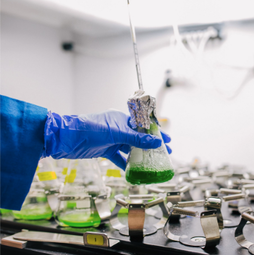 Thanks to advances like CRISPR gene editing, artificial intelligence, and genetic sequencing, microbes have turned into teeny-tiny superheroes with the power to address the world's most pressing challenges: producing sustainable energy, ending hunger, minimizing waste, and mitigating climate change. This feature article on the growing bioeconomy, which anchors a special issue of UC Berkeley's Breakthroughs magazine, spotlights Rausser College faculty and alumni in the center of the action. While they are focused on the sector's enormous potential, they caution that just because we can, doesn't mean we should. What’s key, Coates says, is creating circular, sustainable systems that take carbon out of the atmosphere, then put it back into products and services, all without the planet-harming impacts of fossil fuels. “We can still have a bioeconomy that’s not sustainable,” he cautions. For example, he says, ethanol-dedicated cornfields require carbon-intensive farming inputs—tilling, fertilizing, irrigating—and use land and resources that could be used for food crops. Many analyses find this practice cancels out ethanol’s carbon benefits and creates waste-disposal issues and food versus fuel land-use concerns. “Sometimes the technology is not the important thing,” Coates says. “It’s the entire lifecycle.” Read more. 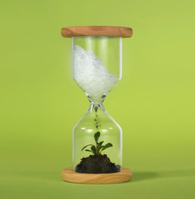 I'd heard casual social talk that "compostable" plant-based dinnerware and other so-called bioplastics do not actually decompose, but I'd never seen any facts. So I jumped at the chance to do this cover story for Berkeley Engineer magazine on a big advance in compostable-plastic technology. Material science professor Ting Xu says better bioplastics are on the way. “To be compostable, everything has to be gone in about 60 days,” says materials science and engineering professor Ting Xu. Plant-based plastics will biodegrade in composting conditions, meaning they’ll eventually break down completely, she says, but most won’t do it within the typical compost cycle, which forces municipal and industrial composting facilities to pull them from the mix. And when they end up in landfills, as they often do, they last as long as conventional plastics — forever. Read more. 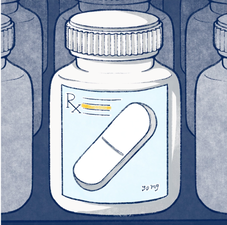 I was surprised to get this UCSF Magazine assignment investigating myths about generic drugs - I'd thought that controversy was long over. I was wrong. A recent study showed that even some practitioners have a bias - unfounded, experts say - toward name brands. The consequences of these prescription choices are in the billions of dollars. The myth of shoddiness may be reinforced by the way generics look, feel, or taste compared to brand-name drugs consumers are familiar with. That’s because inactive fillers, coatings, or liquids that help deliver the active ingredient – the actual drug – can vary. “Many people view generics as somehow being inferior because of observable differences,” [Dr. Candy] Tsourounis says, because generic manufacturers tweak these inactive components. .... “Those differences exist, but the pharmacology – how the drug works in the body, the actual medicine it contains... – is the same.” Read more. This cover story for the fall 2021 Breakthroughs issue explores UC Berkeley Rausser college's impact on the state, national, and global 30x30 initiative. Rausser experts consulting on the California initiative explain how old conservation practices have been replaced by ecosystem-centered science, and they unpack culturally informed research that incorporates Native practices and probes the damaging impacts of history.
Many experts ... feel that getting to 30 percent is feasible, but, they say, success depends on both acknowledging conservation’s history and providing a clear vision for its future. What does “conserved” mean today? Who is doing the conserving, who benefits, and who pays? Read more. 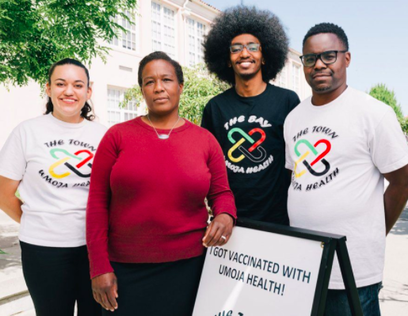 In this UCSF Magazine "Ask the Experts" interview, health-services researcher Dr. Kim Rhoads talks about her community-driven approach to fighting COVID-19 in the Bay Area's Black communities. By acknowledging and addressing Black Americans' deep history with healthcare in America, the program Rhoads launched achieved the highest testing and vaccination rates for African Americans in Alameda county. "We’re very intentional about going to places where our partners say Black people will come. Everything is for us, by us – our materials are created by community members; our mobilizers are local or from partner churches. Our tents are red, green, and black. We are signaling so loudly: This is for Black people. Yes, other people can come, but, Black people, this was actually created for you." Read more. 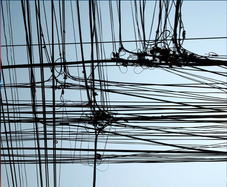 Policy can be tricky to write about - it's hard to stay out of the weeds because the nuances of policy *are* the weeds. This Breakthroughs article on some tricky policies behind the clean energy transition stays firmly anchored in specific examples to try and explain the real-world impact of well-intentioned rules and incentives. Misaligned incentives and issues like NIMBYism are cautionary tales that show how failure to create affordable, equal access to clean energy undermines the larger climate goals the policies are meant to achieve. “It doesn’t have to be like that,” Sallee says. “We can get big efficiency improvements, and we don’t have to sacrifice equity to do it. That’s what we’re trying to push.” Read more. 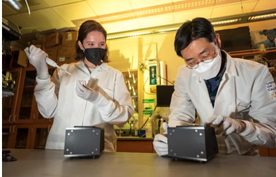 This spring 2021 Berkeley Engineer magazine story shows off how scientists working on basic research sometimes stumble onto discoveries that address real-world problems. Swab your nose, plunge the sample into a reaction chamber, insert the chamber into a cellphone-based device, then press “go.” In as little as 15 minutes, you’ll likely know whether you’re positive for COVID-19, with an unprecedented combination of speed and accuracy.... So where can you go to get this test? “The point is, you wouldn’t have to go anywhere,” says bioengineering professor Dan Fletcher.... “The whole goal is that it would be a point-of-care test — it would be right where people are.” Read more. 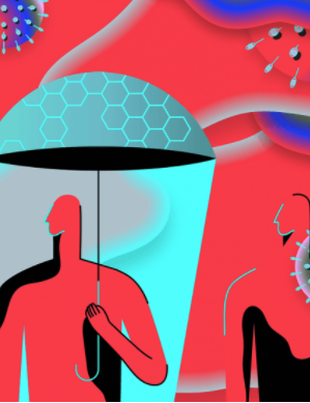 Don't we all want to know? UCSF Magazine had me ask experts for a personal take on vaccine safety, encompassing a variety of perspectives from the university's medical and health schools and research centers. Despite numerous updates that delayed publication as vaccine news changed daily, the story went live in a sweet spot in the news cycle, just on the cusp of the FDA's Emergency Use Approval for the first U.S. vaccine. "Two months [of safety data from a broad population] is not unreasonable for people who have the highest risk of COVID-19 exposure and the lowest risk of adverse vaccine reactions – people who have more to gain from a vaccine – such as primary care providers and first responders. If I were in this group, I would say, “OK, two months will do for me.” Read more. 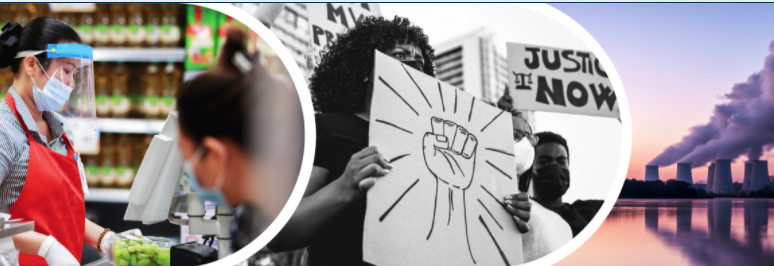 This topic for UC Berkeley's Breakthroughs magazine was almost too big for the article's modest word count, but making these connections accessible and understandable for a broad audience was worth the effort. Thankfully, the researchers helped me boil down their complex work and the editors made sure the economic format didn't result in sacrificing any key points. The phrase “I can’t breathe” has become connective tissue, [Morello-Frosch] notes. George Floyd’s tragic plea is a metaphor for police violence against Black and Brown people, but it also conjures the hallmark symptom of the sickest COVID-19 patients and evokes the respiratory impacts of living in polluted areas—even without the smoky air of climate-change-driven, high-intensity fire seasons. “Our country needs to keep making these connections between justice, sustainability, and equity as we forge our economic recovery,” she says. “A recovery strategy has to provide economic and climate-mitigation opportunities that protect the most vulnerable among us.” Read More. This Fall 2020 Berkeley Engineer magazine cover story is a good old-fashioned cool-science story: A curious researcher innovating with a material that has some unusual properties.
Thermal camouflage technologies — evading the detection of night vision goggles, for example — already exist, conjuring spy-versus-spy covert operations with obvious appeal for military and other surveillance and counter-surveillance applications. But they’re still clumsy, require energy input to work and have rigid, cumbersome structures. They also have glitches — when a hidden object’s temperature changes, it becomes momentarily visible while the devices adjust. The vanadium dioxide-based system is “power-free, monolithic and mechanically flexible,”...and continues to work even when the target object’s temperature surges. Read more. 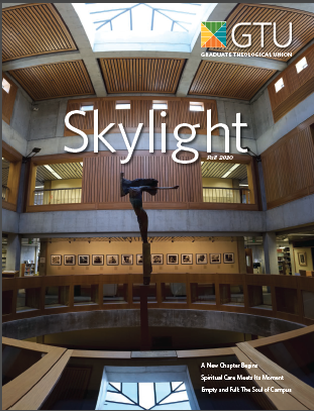 It was great to step into the editor role for this reboot of the Graduate Theological Union's Skylight Magazine. The grad school and seminary consortium previously had taken a more academic approach to their biannual magazine, but wanted to pivot to more outward-facing tone and content. They also had a new president to celebrate, and the coverage needed to reflect his quiet leadership style. Working with a terrific East Coast designer already developing the GTU's new aesthetic, and subbing out some photography to my husband and occasional professional partner, our small team delivered a magazine that showed off the school's exceptional thinkers and doers as well as the spectacular Louis Kahn-designed library. 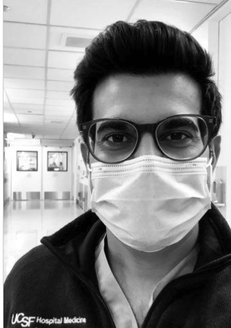 The Q&A and as-told-to formats of this UCSF Magazine series on the medical center's front-line COVID-19 responders allowed individual voices to shine. That felt like the right way to show these caregivers as both professionals and people living through extraordinary circumstances. Even the pharmacist had a gripping story to tell. The hospitalist, in particular, stuck with me. In these tumultuous times, each of us is seeking to find our own "true north." -The Hospitalist -The Emergency Medicine Chief -The Infectious Disease Pharmacist -The Respiratory Therapist -The Navajo Nation Volunteer After days one and two, that crippling fear and anxiety were melting away. A huge part of that was just the human connection I built with the patients. I began to stop thinking of this as “I’m treating COVID.” It broke the anxiety when I realized, this is what I do – I take care of people. Bringing it back to the patients helps you find your true north. Read more. 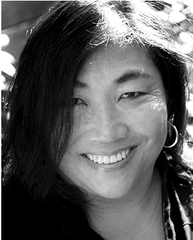 I interviewed these healthcare providers just as the Bay Area was beginning its shutdown. These UCSF alumni stories describe these individuals' outsized contributions to their respective specialties. What the stories don't show is a relentless dedication to the work in the face of the increased personal risk and stress of the pandemic. -This nurse practitioner is a community leader at work and on his own time. -This renegade dentist improved U.S dental care with his research and persistence. -This psychiatric nurse is an advocate for teens and underserved communities. “You're kind of like an orchestra conductor because there are so many things to figure out about what's going on in this person's life,” Nakaishi says. She’d probe a patient’s economic circumstances, food access, school environment, and how the parents talk about food and eating behaviors. Then she’d work to get everyone – the school, the parents, the therapists – on the same page. “It’s a combination of medical science and social science,” she observes. “It's like people science – how do you motivate people to change?” Read more. 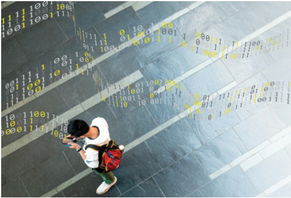 Talking to two leading computer-security experts for this Berkeley Engineer magazine cover story, I saw how data-sharing could be a profound force for good if handled securely. I also began to crack the layman's mystery of why "blockchain" is key to online security. Hint: Think nuclear codes. “'People talk about data like it’s the new oil. But data is actually crude oil. You need to process it to turn it into something that’s useful and valuable.'” Read more. To produce these research-area "vision statements" for the Campaign for Berkeley, I worked with the Alumni Relations team, attended meetings with subject-area leaders from across campus, then shaped all that info into stories, blurbs, and power-facts. The focal point of the campaign template was on one emblematic story that is compelling on its own, highlights a larger initiative, and shows off the campus's phenomenal impacts on large topical areas. 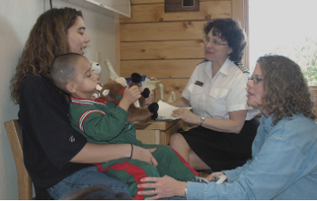 This Breakthroughs magazine profile of a retired Assistant U.S. Surgeon General focused attention on an interesting life, an unconventional outcome from undergraduate pursuits, and the "small but mighty force" looking out for public health in America. Integration means avoiding patient labels like “noncompliant.” “That word takes a pejorative view,” [Wylie] says. “I ask, ‘Why is a patient struggling with guidelines for care?’ That’s a different question that gets to the underlying challenges anyone faces in being compliant with anything—whether it’s transportation to the clinic visit, taking medications, cooking a meal that helps control their diabetes. It’s all connected.” Read the full story. This profile for Berkeley Optometry Magazine focuses on a distinguished alumnus having a career-long influence on the profession in his home country of Mexico, and expanding UC Berkeley's impact in the process.
The new León program is already thriving, with 25 to 30 students in each year and recruitment that is on pace to double those numbers next year.... Those results make Bromberg’s task almost complete. It’s work he has performed pro bono, and happily so. “One of my dreams was for somebody to come and tell me, ‘Here’s the money. Make the ideal optometry school in Mexico,’” he said. “And that’s what happened.” Read the full story on pages 16-17. 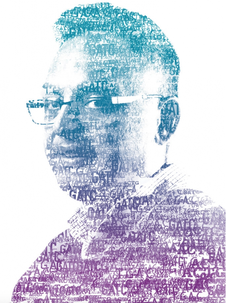 This challenging topic was the cover story of Berkeley Engineer's fall issue. Laying the groundwork for faculty and alumni research breakthroughs required explaining not just the complex gene-editing tool CRISPR-Cas9, but also highly technical nuances of why it has not worked well on genetic diseases - until now. While the CRISPR tool excels at deleting defective genes, it is less efficient at correcting mutations. Now, Berkeley bioengineers think they have cracked the stubborn barriers to correcting the Duchenne gene mutation, potentially optimizing both treatment and diagnosis. If they’re successful, their work could have implications for nearly every genetic disease. READ MORE A storytelling platform helped communicate the intricate research, policy, and planning work conducted by the five divisions that make up Caltrans Planning and Modal Programs. I reported, wrote, and managed this magazine-style identity piece to make the group's work accessible to broad transportation, governmental, and public audiences. The project came through the Technology Transfer Program at UC Berkeley's Institute of Transportation Studies. Writing about the changes happening in San Leandro was a fun return to a previous life covering urban events and entertainment. For this project, I produced a whole slate of stories for a San Francisco Business Times special supplement (they start on page 6). San Leandro's economic development team steered me toward lively and relevant topics and sources, including plenty on the science and tech beat.
The dozen-plus articles and sidebars include:
 In returning to Breakthroughs, the UC Berkeley magazine I edited for five years, I also returned to a favorite topic in this donor profile. Who doesn't love food? And when it combines with health and nutrition, it's interesting, educational, and good for you. The Mediterranean diet is a framework for all of her work. “Thousands of studies show that populations who eat this way are healthier, live longer, have less diabetes, heart disease, cancer…” she says. And it’s not all about recipes. “They also have more vitality as they age, and that has a lot to do with the social aspects of sitting down with other people to share a meal.” Read more. A story based on my PSE Healthy Energy press release led the daily newsletter of the Environmental Health Network. The Environmental News Network also picked up the story, and it reached affected communities through several blog articles and reposts. Those are key target audiences for this public-interest research group filling in critical research gaps on the impacts of oil and gas development.
More than 80 percent of all waste from Pennsylvania’s oil and gas drilling operations stays inside the state, according to a new study that tracks the disposal locations of liquid and solid waste from these operations across 26 years. Numerous human health hazards have been associated with waste from oil and gas extraction, including potential to exposure compounds known to cancer. The study is the first comprehensive assessment of Pennsylvania’s waste-disposal practices, tracking from 1991 – when the state began collecting waste-disposal information – through 2017. Read more. |
Fresh Ink! is a blog showcasing recent work by Ann Brody Guy, an Oakland-based freelance writer-editor covering science, health, and higher educationCategories |

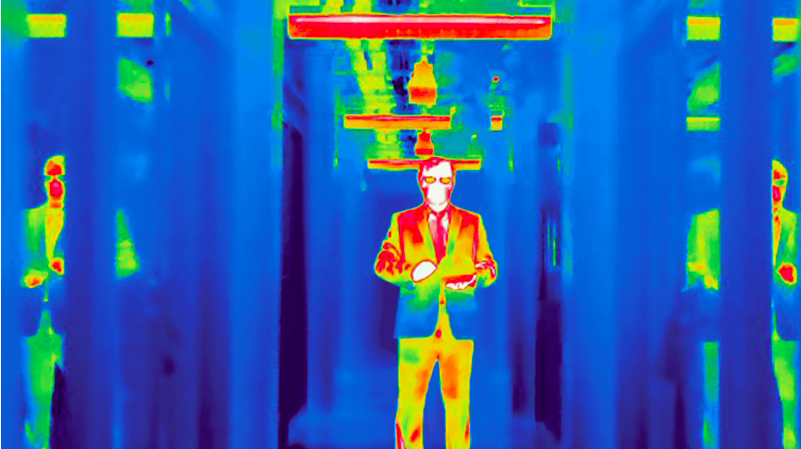

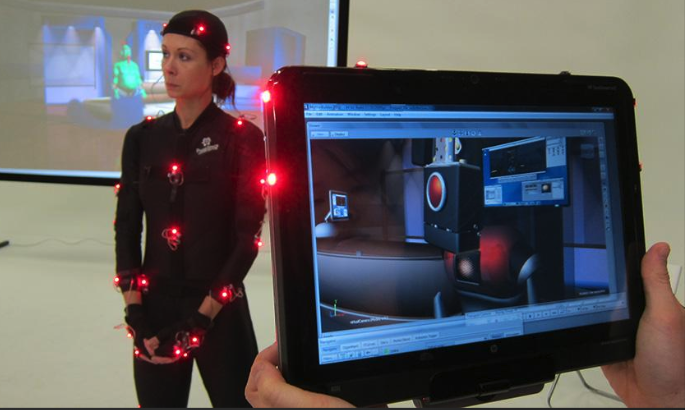

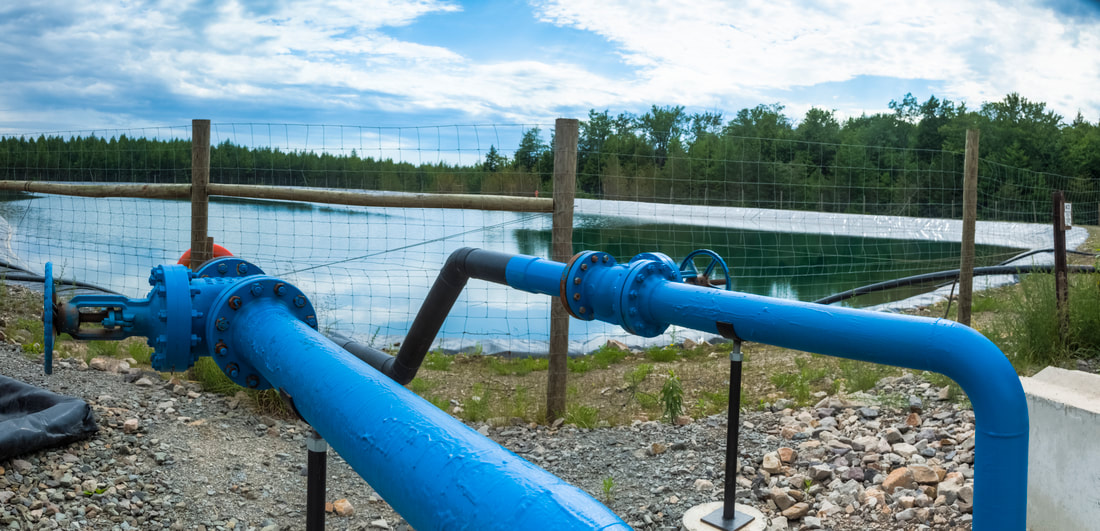
 RSS Feed
RSS Feed